2020 Los Alamos Dynamics Summer School
Contact
- Institute Director
- Charles Farrar
- (505) 665-0860
- Program Administrator
- Ellie Vigil
- (505) 667-2818
- Institute Administrator
- Yvonne John
Team Projects
Project Description
Mentors: Adam Wachtor, Erica Jacobson
Students: Josh Eckels, Isabel Fernandez, Kelly Ho
Project Team
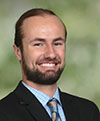 Joshua Eckels – I am a senior studying Mechanical Engineering and Computer Science at Rose-Hulman Institute of Technology in Terre Haute, IN. I am a member of the Formula SAE team and enjoy working on CFD simulation and CAD modeling as part of the aero design team. In the past, I have worked on research with autonomous robotic navigation using neural networks and computer vision software. I plan on pursuing graduate school in aerospace engineering following graduation. I am involved with many music groups on campus and I love playing piano. Liszt and Rachmaninoff are my favorites. I also enjoy cycling and running outside of class.
Joshua Eckels – I am a senior studying Mechanical Engineering and Computer Science at Rose-Hulman Institute of Technology in Terre Haute, IN. I am a member of the Formula SAE team and enjoy working on CFD simulation and CAD modeling as part of the aero design team. In the past, I have worked on research with autonomous robotic navigation using neural networks and computer vision software. I plan on pursuing graduate school in aerospace engineering following graduation. I am involved with many music groups on campus and I love playing piano. Liszt and Rachmaninoff are my favorites. I also enjoy cycling and running outside of class.
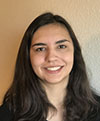 Isabel Fernandez – I am a recent graduate of New Mexico State University where I dual majored in Mechanical and Aerospace Engineering. I have been involved in a research project for the past four semesters focused on the design and manufacturing of a flapping wing drone. I have worked here at LANL as a student intern since the summer of 2017, following my high school graduation. My plan is to attend Georgia Tech for graduate school in the fall of this year to pursue a Master’s in Aerospace Engineering. Outside of school, I really enjoy hiking, skiing, reading, and playing guitar.
Isabel Fernandez – I am a recent graduate of New Mexico State University where I dual majored in Mechanical and Aerospace Engineering. I have been involved in a research project for the past four semesters focused on the design and manufacturing of a flapping wing drone. I have worked here at LANL as a student intern since the summer of 2017, following my high school graduation. My plan is to attend Georgia Tech for graduate school in the fall of this year to pursue a Master’s in Aerospace Engineering. Outside of school, I really enjoy hiking, skiing, reading, and playing guitar.
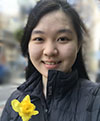 Kelly Ho – I am a junior studying Electrical and Computer Engineering (ECE) with a minor in math at the University of Washington. I work as a drop-in physics tutor on campus due to my interest in physics and teaching. My focused concentrations are controls and communications and I hope to attend graduate school in the future. Apart from school, I enjoy playing the piano and the flute, singing, dancing, swimming, reading science fiction and cooking. I am excited to work with others to perform research together and to learn as much as I can from the Los Alamos Dynamics Summer School program!
Kelly Ho – I am a junior studying Electrical and Computer Engineering (ECE) with a minor in math at the University of Washington. I work as a drop-in physics tutor on campus due to my interest in physics and teaching. My focused concentrations are controls and communications and I hope to attend graduate school in the future. Apart from school, I enjoy playing the piano and the flute, singing, dancing, swimming, reading science fiction and cooking. I am excited to work with others to perform research together and to learn as much as I can from the Los Alamos Dynamics Summer School program!
Project Description
Mentors: Chuck Farrar, Garrison Flynn
Students: David Gibbs, Kaleb Jankowski, Ben Rees
Project Team
 David Gibbs – I am a rising senior at the University of Virginia studying aerospace engineering, where I am a member of Delta Upsilon. Over the past two years, I have been part of two different research teams. First, researched how the coefficient of loss was affected by variations in different types of plumbing corners. During the second, analyzed the effect of angle of attack on the oblique shock wave angle for a diamond shaped airfoil in a supersonic wind tunnel. After graduation, my goal is to become an Air Force fighter pilot. I have been a member of Tragedy Assistance Program for Survivors (TAPS) community for the past ten years. During the past five years, I volunteered as a peer mentor on Memorial Day working with children who have experienced the loss of a military parent - helping them through their grieving process. In my free time, I enjoy rock climbing, running, working out and playing intramural sports.
David Gibbs – I am a rising senior at the University of Virginia studying aerospace engineering, where I am a member of Delta Upsilon. Over the past two years, I have been part of two different research teams. First, researched how the coefficient of loss was affected by variations in different types of plumbing corners. During the second, analyzed the effect of angle of attack on the oblique shock wave angle for a diamond shaped airfoil in a supersonic wind tunnel. After graduation, my goal is to become an Air Force fighter pilot. I have been a member of Tragedy Assistance Program for Survivors (TAPS) community for the past ten years. During the past five years, I volunteered as a peer mentor on Memorial Day working with children who have experienced the loss of a military parent - helping them through their grieving process. In my free time, I enjoy rock climbing, running, working out and playing intramural sports.
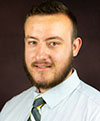 Kaleb Jankowski – I am a junior at New Mexico State University studying applied mathematics and mechanical and aerospace engineering. I currently work as a tutor in the math department as well as assisting in running lower level math labs. I am part of an on-campus AIAA group designing and building a low-cost wind tunnel for use in our own projects as well as for other groups on campus as needed. I plan to attend graduate school upon graduation from NMSU. Outside school, I like to spend my free time skiing, rafting, hiking, and playing/watching soccer.
Kaleb Jankowski – I am a junior at New Mexico State University studying applied mathematics and mechanical and aerospace engineering. I currently work as a tutor in the math department as well as assisting in running lower level math labs. I am part of an on-campus AIAA group designing and building a low-cost wind tunnel for use in our own projects as well as for other groups on campus as needed. I plan to attend graduate school upon graduation from NMSU. Outside school, I like to spend my free time skiing, rafting, hiking, and playing/watching soccer.
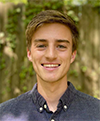 Ben Rees – I'm a rising junior from Los Alamos, New Mexico studying at the University of North Carolina at Chapel Hill and Duke University. I'm majoring in Neuroscience and minoring in Chemistry and Applied Sciences & Engineering. Outside of school, I play ice hockey for UNC's club team and I enjoy trail running and rock climbing.
Ben Rees – I'm a rising junior from Los Alamos, New Mexico studying at the University of North Carolina at Chapel Hill and Duke University. I'm majoring in Neuroscience and minoring in Chemistry and Applied Sciences & Engineering. Outside of school, I play ice hockey for UNC's club team and I enjoy trail running and rock climbing.
Project Description
Mentors: Jeff Tippmann, Brian West
Students: Michael Gassen, Mitchell Roberts, Ian Marts
The detection of a wave propagation perturbation in a medium has been of interest to a large range of applications. Often times the perturbation is an addition of a scatterer the medium, such as a crack in the structure during an ultrasonic measurement, SONAR detection of an underwater vehicle, or equipment in manufacturing or plant setting utilizing a condition-based monitoring system. However, if a problem existed where the removal or movement of an object is of interest, then this problem can be significantly more challenging particularly in a medium with many existing sources or other objects. It has been shown a perturbation can be detected in a random forest with no prior knowledge of the medium. In this project, we will aim to extend these results but to a reverberant environment and develop techniques for employing arrays of microphones for such detection in a real-world setting.
Project Team
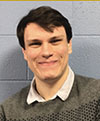 Michael Gassen – I am a junior Mechanical Engineering student at Rose-Hulman Institute of Technology, and my current research involves examining the motion of vortices over a piezoelectric beam. I’m from Michigan and was born and raised in the Detroit Area. When not doing homework, I enjoy hanging out with friends, listening to music, playing video games, and cooking.
Michael Gassen – I am a junior Mechanical Engineering student at Rose-Hulman Institute of Technology, and my current research involves examining the motion of vortices over a piezoelectric beam. I’m from Michigan and was born and raised in the Detroit Area. When not doing homework, I enjoy hanging out with friends, listening to music, playing video games, and cooking.
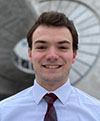 Mitchell Roberts – I am a junior studying Mechanical Engineering at the University of Wisconsin – Madison. At school, I am a technician at the College of Engineering Machine Shop where I instruct fellow students to use machinery as well as advise them while they work on their respective projects. I am also a member of the American Society of Engineers and the UW – Madison Space Race propulsion team. Academically, I am particularly interested in thermo and fluid dynamics. In my spare time, I like to play hockey and do outdoor activities such as biking and hiking.
Mitchell Roberts – I am a junior studying Mechanical Engineering at the University of Wisconsin – Madison. At school, I am a technician at the College of Engineering Machine Shop where I instruct fellow students to use machinery as well as advise them while they work on their respective projects. I am also a member of the American Society of Engineers and the UW – Madison Space Race propulsion team. Academically, I am particularly interested in thermo and fluid dynamics. In my spare time, I like to play hockey and do outdoor activities such as biking and hiking.
 Ian Marts – I am a junior Math and Engineering major studying at Southern University at New Orleans where I am a ROSES Scholar (Research on the Science and Engineering of Signatures). My research involves Sodium Iodide Scintillation Radiation Detectors. I will pursue a graduate degree in electrical engineering or a related engineering field. I also enjoy spending time with my family especially my siblings and nieces and nephew. I am also a fan sports especially football, basketball, and martial arts.
Ian Marts – I am a junior Math and Engineering major studying at Southern University at New Orleans where I am a ROSES Scholar (Research on the Science and Engineering of Signatures). My research involves Sodium Iodide Scintillation Radiation Detectors. I will pursue a graduate degree in electrical engineering or a related engineering field. I also enjoy spending time with my family especially my siblings and nieces and nephew. I am also a fan sports especially football, basketball, and martial arts.
Project Description
Mentors: David Mascareñas, Alessandro Cattaneo
Students: Andrew Gothard, Corey Henry, Daniel Jones
Project Team
 Andrew Gothard – I am a Junior studying Mechanical Engineering at Tennessee Technological University in Cookeville, Tennessee. At my University, I am currently a research assistant in a cryogenic material testing laboratory, and I am an officer in Pi Tau Sigma. My research involves the cryogenic testing of certain computer boards to obtain properties for predictive FEA modes. I hope to try out another research area this fall involving dynamic smart materials, and I will likely work in one of these two labs during graduate school. Outside of school, I am a member of Knight’s Chapel Church and help lead the youth program there. I am also a recreational runner and soccer player. I just ran my first marathon this past winter, and I am currently training for a 200 mile team race called a Ragnar. In addition to this, I enjoy nature and pretty much any activity outside.
Andrew Gothard – I am a Junior studying Mechanical Engineering at Tennessee Technological University in Cookeville, Tennessee. At my University, I am currently a research assistant in a cryogenic material testing laboratory, and I am an officer in Pi Tau Sigma. My research involves the cryogenic testing of certain computer boards to obtain properties for predictive FEA modes. I hope to try out another research area this fall involving dynamic smart materials, and I will likely work in one of these two labs during graduate school. Outside of school, I am a member of Knight’s Chapel Church and help lead the youth program there. I am also a recreational runner and soccer player. I just ran my first marathon this past winter, and I am currently training for a 200 mile team race called a Ragnar. In addition to this, I enjoy nature and pretty much any activity outside.
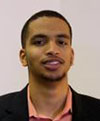 Corey Henry – I am a senior in Mechanical Engineering from Florida International University. I currently work at the MAIDROC Laboratory at FIU conducting research on design optimization problems and computational fluid dynamics. I also teach students the fundamentals of rocketry as the Director of Rocketry for the American Society of Mechanical Engineers chapter at FIU. In my free time I enjoy reading, working out, and running.
Corey Henry – I am a senior in Mechanical Engineering from Florida International University. I currently work at the MAIDROC Laboratory at FIU conducting research on design optimization problems and computational fluid dynamics. I also teach students the fundamentals of rocketry as the Director of Rocketry for the American Society of Mechanical Engineers chapter at FIU. In my free time I enjoy reading, working out, and running.
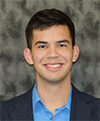 Daniel Jones – I am a recent graduate (May 2020) of LeTourneau University in Longview, Texas, where I served as an assistant to the Chair of Mechanical Engineering and as a Supplemental Instructor. My areas of interest and personal study lie in fracture morphology, failure analysis, structures design/analysis, and higher education. I will be taking a two-year break before graduate school to obtain valuable industry experience. Outside of school, I love to cook, camp, travel and hike. If I’m not doing either one of those things, I’m probably off meeting new people and making new connections.
Daniel Jones – I am a recent graduate (May 2020) of LeTourneau University in Longview, Texas, where I served as an assistant to the Chair of Mechanical Engineering and as a Supplemental Instructor. My areas of interest and personal study lie in fracture morphology, failure analysis, structures design/analysis, and higher education. I will be taking a two-year break before graduate school to obtain valuable industry experience. Outside of school, I love to cook, camp, travel and hike. If I’m not doing either one of those things, I’m probably off meeting new people and making new connections.
Project Description
Mentors: Eric Flynn, Ian Cummings
Students: Casey Gardner, Michael Koutoumbas, Young Ko
The material needs for the aerospace industry have driven the development of composite metal laminates (CMLs) for a wide range of applications. CMLs contain bonded layers of composites and metals, and are often utilized because they offer weight savings while exhibiting high strength and corrosion resistant properties. These materials present interesting inspection challenges due to the heterogeneous nature of the material. Of specific interest is the capability to detect delamination between the composite and metal layers from the composite side of the material. In fact, composite-metal delaminations in carbon-fiber wrapped aluminum fuel tanks were the suspected cause of the explosive destruction of SpaceX’s Falcon 9 rocket on September 1, 2016. This project will apply simulation and data analysis techniques to ultrasonic inspection measurements via an acoustic wave spectroscopy (AWS) system to a CML sample and involve the development of signal processing techniques to identify areas of composite-metal delamination.
Project Team
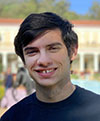 Casey Gardner – I am a graduate student at UC San Diego, pursuing a M.S. in Structural Engineering with Specialization in Structural Health Monitoring and Non-Destructive Evaluation. I obtained my B.S. in Engineering from Harvey Mudd College, where I helped perform in-situ, structural dynamics testing of large concrete dams throughout the country. Those in-the-field research experiences sparked a passion for the multidisciplinary world of dynamics and non-destructive testing and ultimately inspired me to delve deeper into those topics as a graduate student. In my free time, I enjoy reading, running, travelling, and comedy improv.
Casey Gardner – I am a graduate student at UC San Diego, pursuing a M.S. in Structural Engineering with Specialization in Structural Health Monitoring and Non-Destructive Evaluation. I obtained my B.S. in Engineering from Harvey Mudd College, where I helped perform in-situ, structural dynamics testing of large concrete dams throughout the country. Those in-the-field research experiences sparked a passion for the multidisciplinary world of dynamics and non-destructive testing and ultimately inspired me to delve deeper into those topics as a graduate student. In my free time, I enjoy reading, running, travelling, and comedy improv.
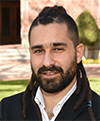 Michael Koutoumbas – I am a Junior Mechanical Engineer at the University of Southern California where I am an active member in our Liquid Propulsion Laboratory and serve as cognizant chassis engineer on the Formula SAE Electric race team. My areas of specific interest and future research aspirations are in dynamic modelling and control of precision mechanical machinery as well as aerospace controls. I am newly admitted graduate student and I will be pursuing my graduate studies in parallel to my undergraduate coursework. Outside of the classroom I spend my free time skate boarding, hiking, and I foster an overall explorer attitude.
Michael Koutoumbas – I am a Junior Mechanical Engineer at the University of Southern California where I am an active member in our Liquid Propulsion Laboratory and serve as cognizant chassis engineer on the Formula SAE Electric race team. My areas of specific interest and future research aspirations are in dynamic modelling and control of precision mechanical machinery as well as aerospace controls. I am newly admitted graduate student and I will be pursuing my graduate studies in parallel to my undergraduate coursework. Outside of the classroom I spend my free time skate boarding, hiking, and I foster an overall explorer attitude.
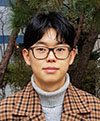 Young Ko – I am a senior studying Mechanical Engineering at Seoul National University, where I work as an undergraduate research assistant at Advanced Energy Systems Laboratory. Currently, my research involves developing pure methane compression ignition engine aimed for efficient combustion and low emission performance. I attended an exchange student program last fall at Georgia Tech, and gained precious experience with diverse engineers in a vibrant atmosphere. I also luckily had a chance to participate in Vortex-induced Vibration based Energy Harvesting experiment as an UROP program under Prof. Alper Erturk. I hope to further dive into renewable energy systems in graduate school on thermal and fluid energy transfer basis. Outside of class, I enjoy hiking, watching baseball, playing board games and electric guitar.
Young Ko – I am a senior studying Mechanical Engineering at Seoul National University, where I work as an undergraduate research assistant at Advanced Energy Systems Laboratory. Currently, my research involves developing pure methane compression ignition engine aimed for efficient combustion and low emission performance. I attended an exchange student program last fall at Georgia Tech, and gained precious experience with diverse engineers in a vibrant atmosphere. I also luckily had a chance to participate in Vortex-induced Vibration based Energy Harvesting experiment as an UROP program under Prof. Alper Erturk. I hope to further dive into renewable energy systems in graduate school on thermal and fluid energy transfer basis. Outside of class, I enjoy hiking, watching baseball, playing board games and electric guitar.
Project Description
Mentors: Margaret Root, Sarah Sarnoski
Students: Ellie Andreyka, Nai'a North, Anand Iyer
The objective of this research is to study the effects of radiation on optically stimulated luminescence (OSL) fibers, which can be used for mobile radiation detection, with the ultimate goal of applying them to textiles with real-time radiation detection functionality. Wearable clothing with radiation detection that is fast and accurate would revolutionize the field of radiation protection and open a major new technology development focus area. However, such advanced functionality will require significant engineering design and testing to create highly complex, integrated products for practical use in working environments. Successful outcomes for this proposed work will be simulation-based determination of the signal processing and radiation detection characteristics of the optical fibers.
Project Team
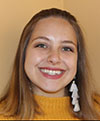 Ellie Andreyka – I am a fourth-year student studying Mechanical Engineering and Writing at Oregon State University. My research interests are in robotics and human centered design. Previous research experience includes developing robotic muscles and limbs, a continuous printing 3D printer, and a fuel-efficient water pasteurization system. I’ve also been part of OSU’s Mars Rover Robotics Team and the Society of Women in Engineering, and am working to develop an accredited interdisciplinary engineering degree at my university. In my free time I like to run, snowboard, cook, read, collage, and do pottery.
Ellie Andreyka – I am a fourth-year student studying Mechanical Engineering and Writing at Oregon State University. My research interests are in robotics and human centered design. Previous research experience includes developing robotic muscles and limbs, a continuous printing 3D printer, and a fuel-efficient water pasteurization system. I’ve also been part of OSU’s Mars Rover Robotics Team and the Society of Women in Engineering, and am working to develop an accredited interdisciplinary engineering degree at my university. In my free time I like to run, snowboard, cook, read, collage, and do pottery.
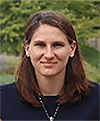 Nai'a North – I am a senior studying mechanical engineering at University of Michigan with a specialization in Global Health Design and a minor in math. I have a passion for biomedical devices and I do research in EMG signal processing for myoelectric prosthetic control. I am from the Big Island of Hawai`i and I enjoy traveling, hiking, and SCUBA diving.
Nai'a North – I am a senior studying mechanical engineering at University of Michigan with a specialization in Global Health Design and a minor in math. I have a passion for biomedical devices and I do research in EMG signal processing for myoelectric prosthetic control. I am from the Big Island of Hawai`i and I enjoy traveling, hiking, and SCUBA diving.
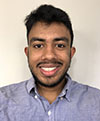 Anand Iyer – I am a senior studying Mechanical Engineering and Applied Mathematics at North Carolina State University. I am a member of Tau Beta Pi and the Math Honors Program and participate in a variety of campus events. I have been involved in the Cooperative Education program as well as undergraduate research in Aerospace during my time at NC State. Outside of classes, I enjoy playing sports such as tennis and basketball as well as traveling and spending time outdoors.
Anand Iyer – I am a senior studying Mechanical Engineering and Applied Mathematics at North Carolina State University. I am a member of Tau Beta Pi and the Math Honors Program and participate in a variety of campus events. I have been involved in the Cooperative Education program as well as undergraduate research in Aerospace during my time at NC State. Outside of classes, I enjoy playing sports such as tennis and basketball as well as traveling and spending time outdoors.
Project Description
Mentors: Alessandro Cattaneo, David Mascareñas
Students: Sarah Mantell, Addison Schwamb, Nathan Sapong
Project Team
Sarah Mantell – I am a junior studying mathematics at California Polytechnic State University, San Luis Obispo. On campus, I'm involved with Math Club and the Association for Women in Mathematics. My current research is investigating the numerical range of block Toeplitz matrices. In the past, I've worked on a theoretical statistics research project at Oregon State University and a systems biology research project at Cold Spring Harbor Laboratory. Following my undergraduate studies, I plan on applying to PhD programs in mathematics. When I'm not studying, I enjoy art (specifically watercolor and sculpture), learning how to play guitar, spending time with my cat, and cooking. I'm also taking a glass blowing class this quarter!
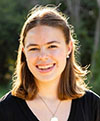 Addison Schwamb – I am a senior Computer Engineering major at Oklahoma Christian University. This fall, I plan to begin a PhD in Electrical Engineering, in which my research focus will be biomedical applications of control systems. Previously, I conducted research in control strategies for pursuit evasion robots, which I presented at the IEEE 2019 Conference on Control Technology and Applications. On campus, I am active in the University Chamber Singers, Society of Women Engineers, and my social service club, Phi Omega Nu. In my free time, I love to run, travel, and hike—one of the highlights of last summer was backcountry camping in the Painted Desert during a solo road trip on Route 66.
Addison Schwamb – I am a senior Computer Engineering major at Oklahoma Christian University. This fall, I plan to begin a PhD in Electrical Engineering, in which my research focus will be biomedical applications of control systems. Previously, I conducted research in control strategies for pursuit evasion robots, which I presented at the IEEE 2019 Conference on Control Technology and Applications. On campus, I am active in the University Chamber Singers, Society of Women Engineers, and my social service club, Phi Omega Nu. In my free time, I love to run, travel, and hike—one of the highlights of last summer was backcountry camping in the Painted Desert during a solo road trip on Route 66.
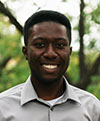 Nathan Sapong – I am a third-year student studying Mechanical Engineering at the University of California, Riverside and a member in the University Honors Program. I serve as the Treasurer for my university’s chapter of the American Society of Mechanical Engineers and the Co-Chief Engineer for the competition aeronautics team, Highlander Air (SAE Aero). In addition, I work on an autonomous vehicle project researching dynamics and control systems on scale automotive models. During my spare time, I enjoy playing sports, hiking, traveling, and practicing music.
Nathan Sapong – I am a third-year student studying Mechanical Engineering at the University of California, Riverside and a member in the University Honors Program. I serve as the Treasurer for my university’s chapter of the American Society of Mechanical Engineers and the Co-Chief Engineer for the competition aeronautics team, Highlander Air (SAE Aero). In addition, I work on an autonomous vehicle project researching dynamics and control systems on scale automotive models. During my spare time, I enjoy playing sports, hiking, traveling, and practicing music.
Selected Guest Lectures
Phil Cornwell
Professor of Mechanical Engineering
Rose Hulman Institute of Technology
In this talk, Dr. Cornwell will discuss how to give effective oral presentations using a type of slide design called the assertion-evidence approach. In this approach, the presenter is required to explicitly identify what messages (assertions) he or she is trying to make and the evidence to support these assertions. The information in this talk is based on the work of Dr. Michael Alley from Penn State.
Curtt Ammerman
LANL, Q-15
Los Alamos National Laboratory is the nuclear design agency responsible for the B61-12 Life Extension Program (LEP). The term “life extension program” means a program to repair/replace components of a nuclear weapon to ensure its ability to meet military requirements. By extending the life, or time that a weapon can safely and reliably remain in the stockpile without having to be replaced or removed, the National Nuclear Security Administration (NNSA) is able to maintain a credible nuclear deterrent without producing new weapons or conducting new underground nuclear tests. This LEP will consolidate multiple B61 mods, replace aging components, and extend the lifetime of the B61 for an additional 20 to 30 years. The LEP will complete a first production unit no later than the end of FY2020. This presentation will provide a brief overview of the B61LEP, and will dive more deeply into the testing and qualification activities that are being conducted to ensure that the B61-12 meets its requirements to be safe and reliable.
Nikolaos Dervilis
Dynamics Research Group, Department of Mechanical Engineering
University of Sheffield
The use of offshore wind farms has been growing in recent years, especially in Europe. United Kingdom is presenting a geometrically-growing interest in exploring and investing in such offshore power plants as the country's water sites offer impressive wind conditions. The new generation of offshore wind turbines shall have blades that will exceed 100m and soon will reach 150m in size (15MW wind turbine PM generators). This talk will give an overview of offshore wind turbines and farms.
The cost of an offshore wind farm is relatively high, and therefore their reliability is crucial if they ever need to be fully integrated into the energy arena.
In turn, this talk will present an overview of current monitoring trends for wind turbines (WTs) and will try to address the motivation and the effectiveness of Structural Health Monitoring (SHM) and machine learning applications for WTs, as well as, the idea of intelligent
WT.
François Hemez
Lawrence Livermore National Laboratory
Verification and Validation (V&V) refers to a broad range of activities that are carried out to provide evidence that measurements and predictions are credible and scientifically defendable. These lectures introduce the main concepts of V&V and illustrate how various V&V activities can be carried out for engineering applications. V&V activities include software quality assurance, code and calculation verification, data analysis and archiving, sensitivity analysis, model calibration, and the quantification of uncertainty. The cornerstone of V&V is threefold with, first, showing whenever possible that numerical predictions are accurate relative to physical data over a range of settings or operating conditions; second, quantifying the sources and levels of uncertainty; and, third, demonstrating that predictions are robust, that is, insensitive, to the modeling assumptions and lack-of-knowledge. Examples are presented in solid mechanics, transient response of structures, and shock physics.
Saryu Fensin
LANL, MST-8
For ductile metals, the process of dynamic fracture occurs through nucleation, growth and coalescence of voids. For high purity single-phase metals, it has been observed by numerous investigators that voids tend to heterogeneously nucleate at grain boundaries and all grain boundaries are not equally susceptible to void nucleation. However, the reasons behind this observation is not fully understood. It is reasonable to assume though that grain boundary structure and its affect on related properties must play a key role in understanding this deterministic relationship. In this work we explore grain boundaries properties like energy and excess volume, in addition to its interactions with dislocations and investigate any relationship it might have with dynamic fracture. We will attempt to compare the mechanisms behind void nucleation in FCC (Cu) and BCC (Ta) materials by using molecular-dynamics simulations.
Nick Lieven
University of Bristol
Prof Lieven’s talk will explore the extreme dynamic behavior of aircraft and their related systems. A particular focus will be on the physical factors which lead to flutter and aircraft instability. Although flutter can be an entirely predictable phenomenon there is an increasing awareness that such aeroelastic instabilities can be caused by structural non-linearities and human intervention. The talk will explain how these factors can interact in a potentially destructive way and what technologies and design modifications can be deployed to mitigate against this behavior. The talk will consider both the modelling aspects of aircraft non-linearities and the practical considerations associated with flight testing and – ultimately – flight safety.
Amy Regan
LANL, ISR-5
LANL satellite engineering comprises a broad set of disciplines working together to bring science ideas to fruition. ISR Division’s mission is to create, deliver, support and exploit innovative sensing systems for space-based, airborne and ground-based applications to address critical national security and scientific challenges. LANL has delivered more than 1400+ sensors on 400+ instruments on 60+ satellites. This talk will discuss the various engineering challenges to putting hardware in space.



